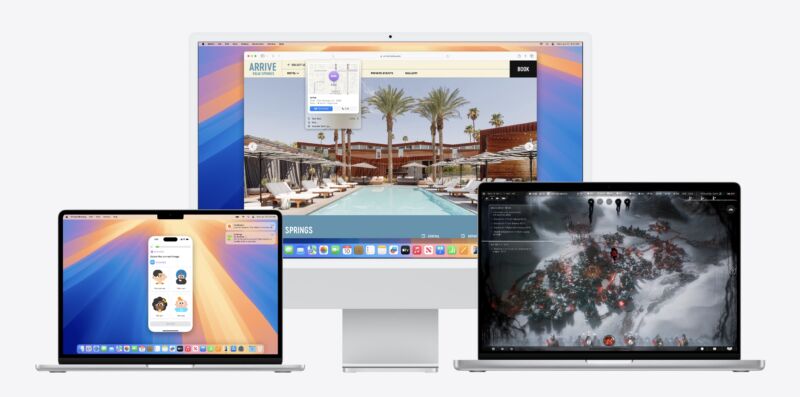Apple quietly improves Mac virtualization in macOS 15 Sequoia
Ars Technica 2024-06-11

Enlarge / Macs running a preview build of macOS 15 Sequoia. (credit: Apple)
We’ve written before about Apple’s handy virtualization framework in recent versions of macOS, which allows users of Apple Silicon Macs with sufficient RAM to easily set up macOS and Linux virtual machines using a number of lightweight third-party apps. This is useful for anyone who needs to test software in multiple macOS versions but doesn’t own a fleet of Mac hardware or multiple boot partitions. (Intel Macs support the virtualization framework, too, but only for Linux VMs, making it less useful.)
But up until now, you haven’t been able to sign into iCloud using macOS on a VM. This made the feature less useful for developers or users hoping to test iCloud features in macOS, or whose apps rely on some kind of syncing with iCloud, or people who just wanted easy access to their iCloud data from within a VM.
This limitation is going away in macOS 15 Sequoia, according to developer documentation that Apple released yesterday. As long as your host operating system is macOS 15 or newer and your guest operating system is macOS 15 or newer, VMs will now be able to sign into and use iCloud and other Apple ID-related services just as they would when running directly on the hardware.